The human Obg protein GTPBP10 is involved in mitoribosomal biogenesis
- PMID: 30085210
- PMCID: PMC6144781
- DOI: 10.1093/nar/gky701
The human Obg protein GTPBP10 is involved in mitoribosomal biogenesis
Abstract
The human mitochondrial translation apparatus, which synthesizes the core subunits of the oxidative phosphorylation system, is of central interest as mutations in several genes encoding for mitoribosomal proteins or translation factors cause severe human diseases. Little is known, how this complex machinery assembles from nuclear-encoded protein components and mitochondrial-encoded RNAs, and which ancillary factors are required to form a functional mitoribosome. We have characterized the human Obg protein GTPBP10, which associates specifically with the mitoribosomal large subunit at a late maturation state. Defining its interactome, we have shown that GTPBP10 is in a complex with other mtLSU biogenesis factors including mitochondrial RNA granule components, the 16S rRNA module and late mtLSU assembly factors such as MALSU1, SMCR7L, MTERF4 and NSUN4. GTPBP10 deficiency leads to a drastic reduction in 55S monosome formation resulting in defective mtDNA-expression and in a decrease in cell growth. Our results suggest that GTPBP10 is a ribosome biogenesis factor of the mtLSU required for late stages of maturation.
Figures
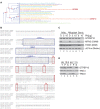
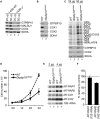
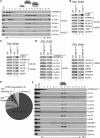
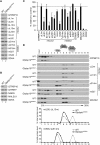
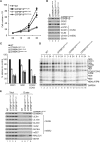
Similar articles
-
Human GTPBP10 is required for mitoribosome maturation.Nucleic Acids Res. 2018 Nov 30;46(21):11423-11437. doi: 10.1093/nar/gky938. Nucleic Acids Res. 2018. PMID: 30321378 Free PMC article.
-
Human GTPBP5 (MTG2) fuels mitoribosome large subunit maturation by facilitating 16S rRNA methylation.Nucleic Acids Res. 2020 Aug 20;48(14):7924-7943. doi: 10.1093/nar/gkaa592. Nucleic Acids Res. 2020. PMID: 32652011 Free PMC article.
-
Dual function of GTPBP6 in biogenesis and recycling of human mitochondrial ribosomes.Nucleic Acids Res. 2020 Dec 16;48(22):12929-12942. doi: 10.1093/nar/gkaa1132. Nucleic Acids Res. 2020. PMID: 33264405 Free PMC article.
-
Human Mitoribosome Biogenesis and Its Emerging Links to Disease.Int J Mol Sci. 2021 Apr 7;22(8):3827. doi: 10.3390/ijms22083827. Int J Mol Sci. 2021. PMID: 33917098 Free PMC article. Review.
-
Insights into mitoribosomal biogenesis from recent structural studies.Trends Biochem Sci. 2023 Jul;48(7):629-641. doi: 10.1016/j.tibs.2023.04.002. Epub 2023 May 10. Trends Biochem Sci. 2023. PMID: 37169615 Review.
Cited by
-
GTPBP8 is required for mitoribosomal biogenesis and mitochondrial translation.Cell Mol Life Sci. 2023 Nov 16;80(12):361. doi: 10.1007/s00018-023-05014-0. Cell Mol Life Sci. 2023. PMID: 37971521 Free PMC article.
-
Human GTPBP10 is required for mitoribosome maturation.Nucleic Acids Res. 2018 Nov 30;46(21):11423-11437. doi: 10.1093/nar/gky938. Nucleic Acids Res. 2018. PMID: 30321378 Free PMC article.
-
MicroRNA editing patterns in Huntington's disease.Sci Rep. 2022 Feb 24;12(1):3173. doi: 10.1038/s41598-022-06970-6. Sci Rep. 2022. PMID: 35210471 Free PMC article.
-
Blackout in the powerhouse: clinical phenotypes associated with defects in the assembly of OXPHOS complexes and the mitoribosome.Biochem J. 2020 Nov 13;477(21):4085-4132. doi: 10.1042/BCJ20190767. Biochem J. 2020. PMID: 33151299 Free PMC article. Review.
-
GTPBP8 plays a role in mitoribosome formation in human mitochondria.Nat Commun. 2024 Jul 5;15(1):5664. doi: 10.1038/s41467-024-50011-x. Nat Commun. 2024. PMID: 38969660 Free PMC article.
References
-
- Greber B.J., Ban N.. Structure and function of the mitochondrial ribosome. Annu. Rev. Biochem. 2016; 85:103–132. - PubMed
-
- Shajani Z., Sykes M.T., Williamson J.R.. Assembly of bacterial ribosomes. Annu. Rev. Biochem. 2011; 80:501–526. - PubMed
-
- Kint C., Verstraeten N., Hofkens J., Fauvart M., Michiels J.. Bacterial Obg proteins: GTPases at the nexus of protein and DNA synthesis. Crit. Rev. Microbiol. 2014; 40:207–224. - PubMed
Publication types
MeSH terms
Substances
LinkOut - more resources
Full Text Sources
Other Literature Sources
Molecular Biology Databases

